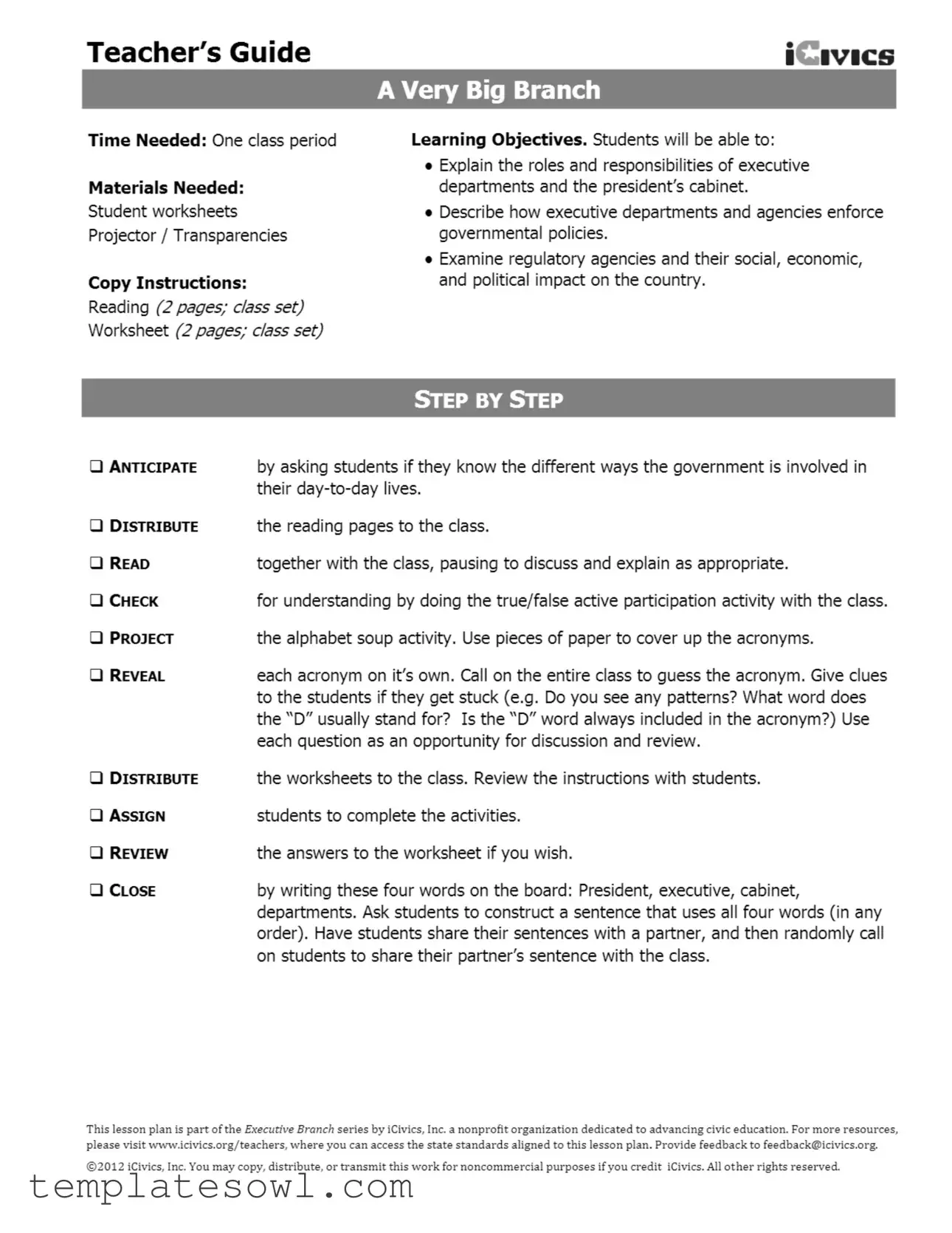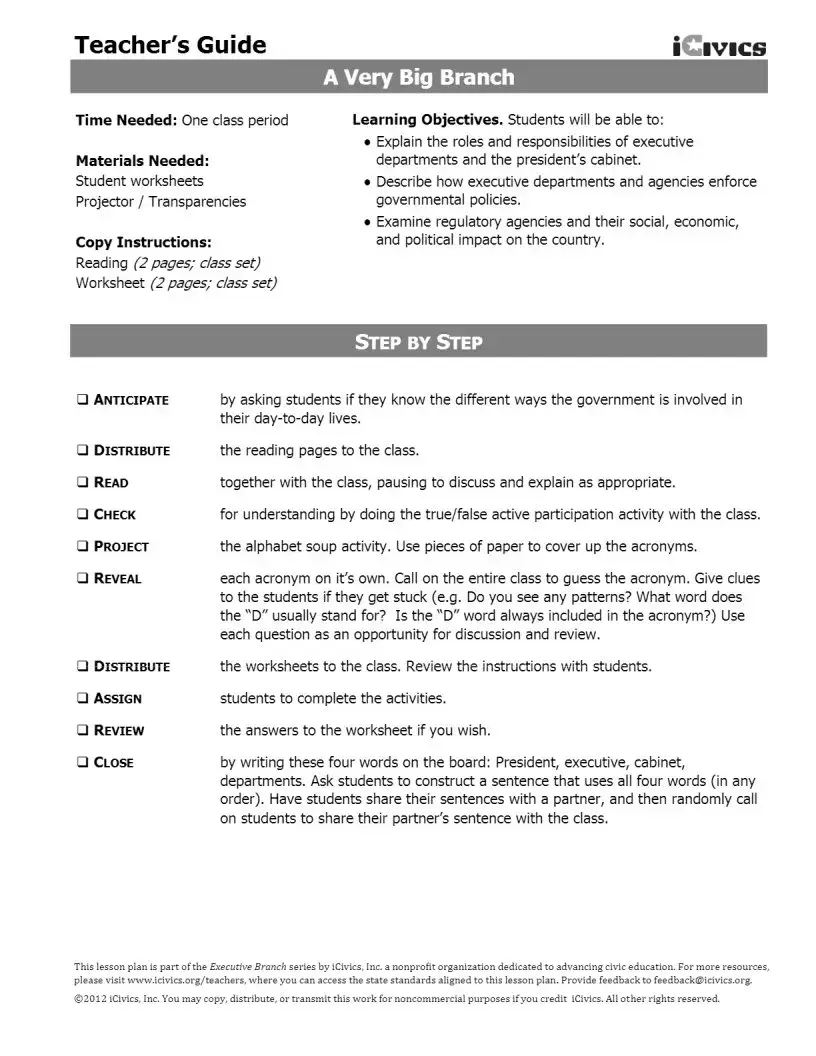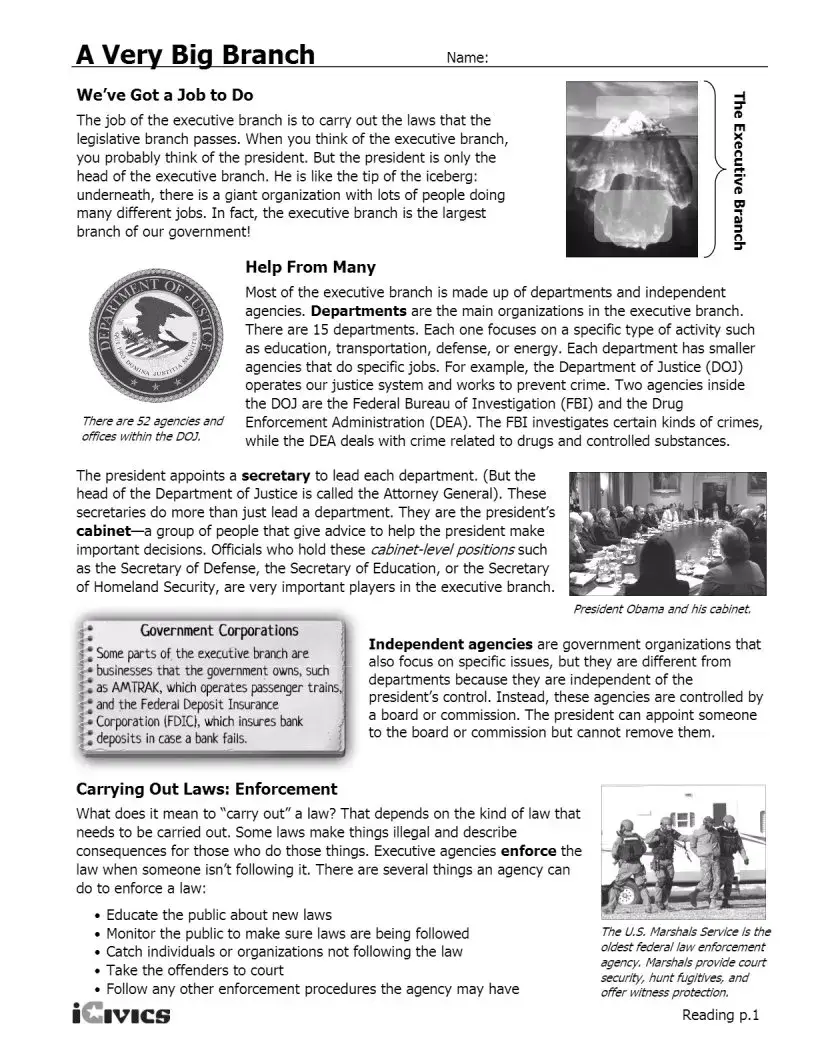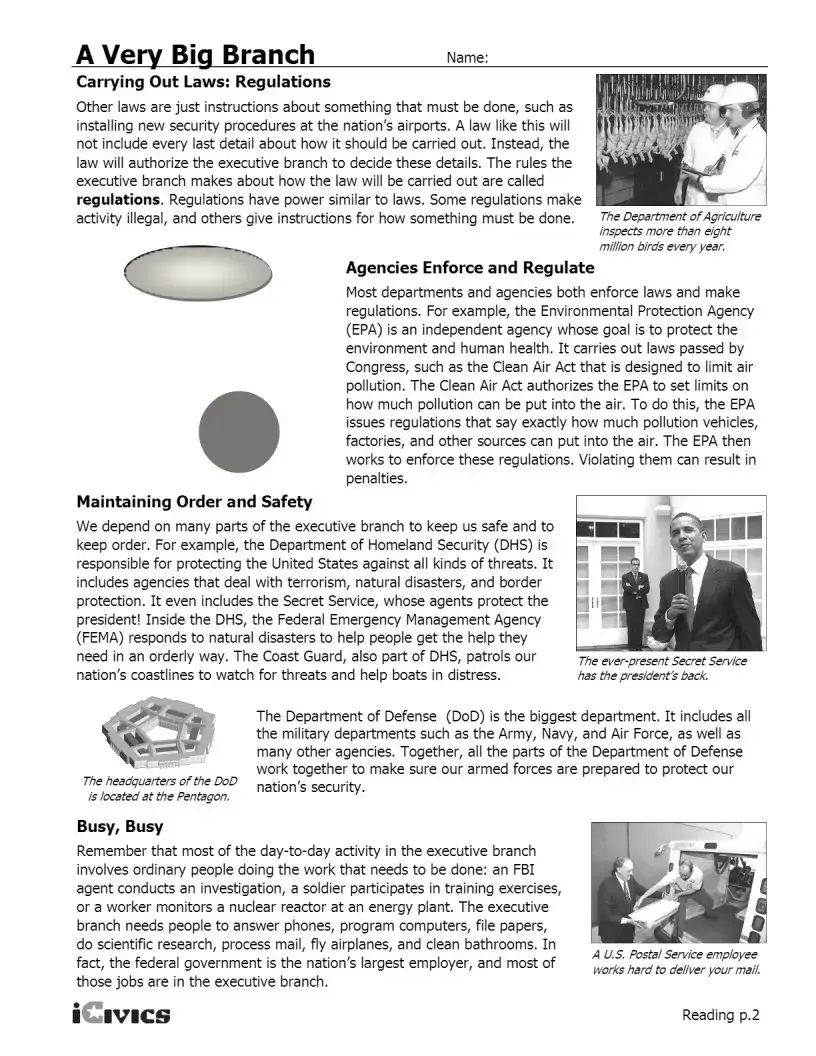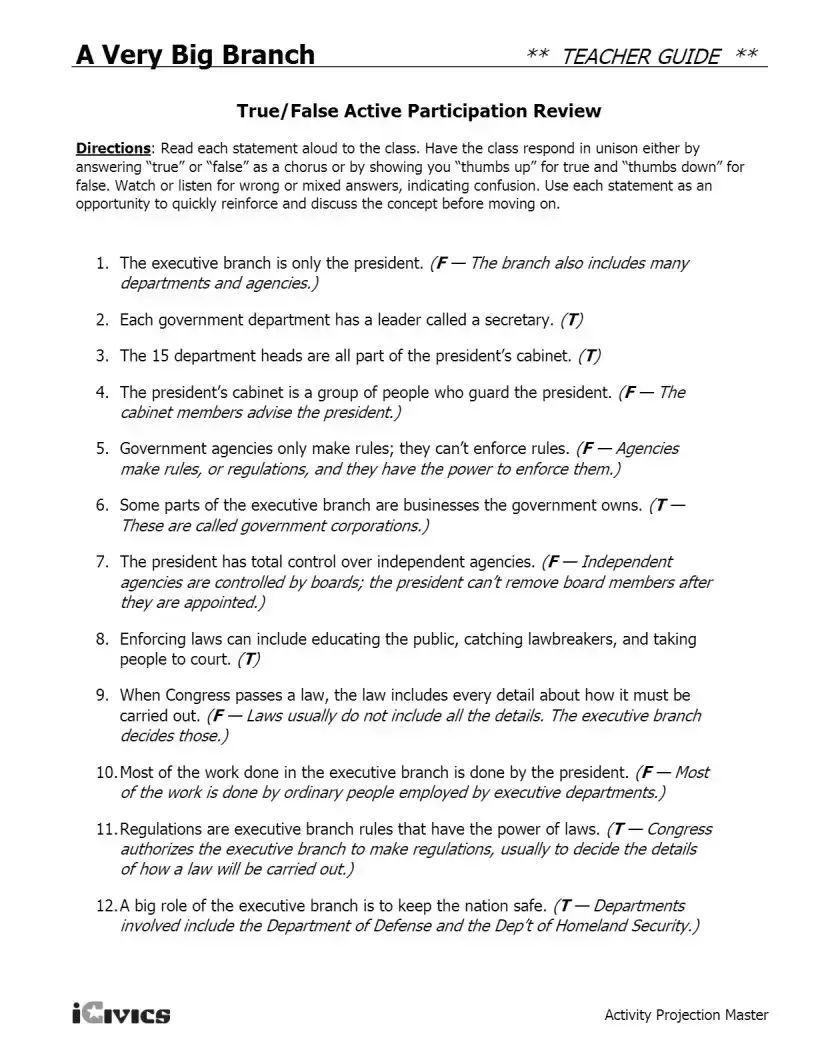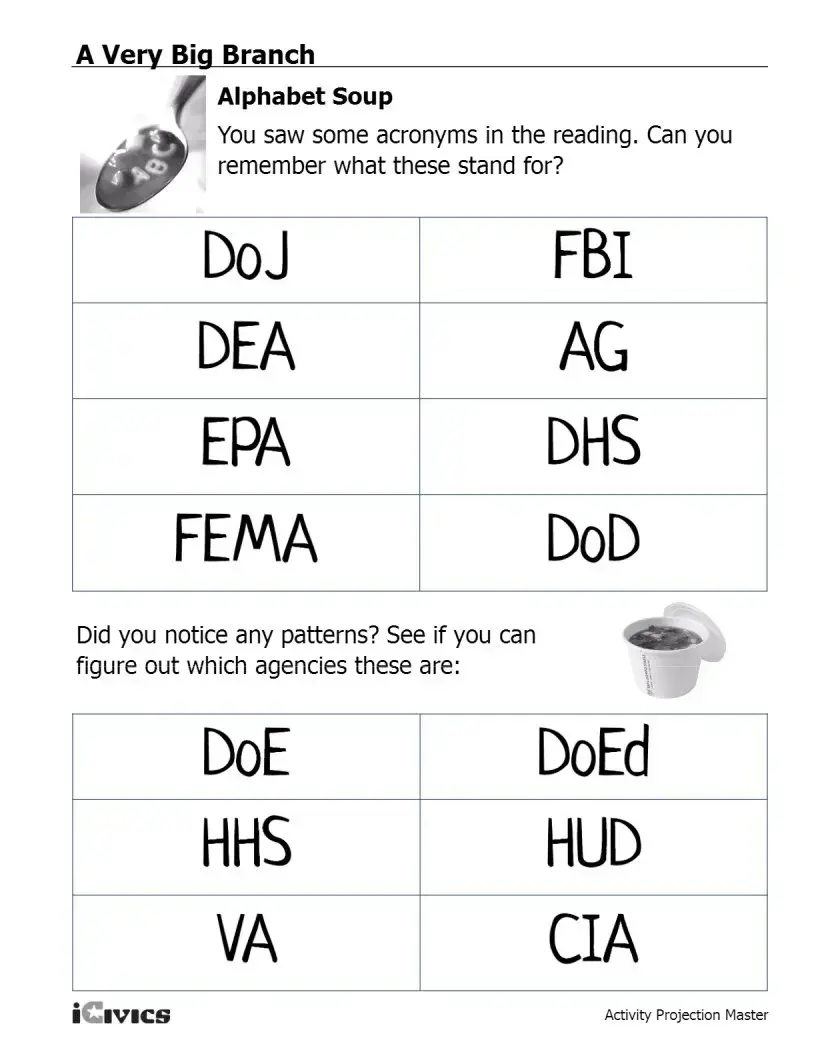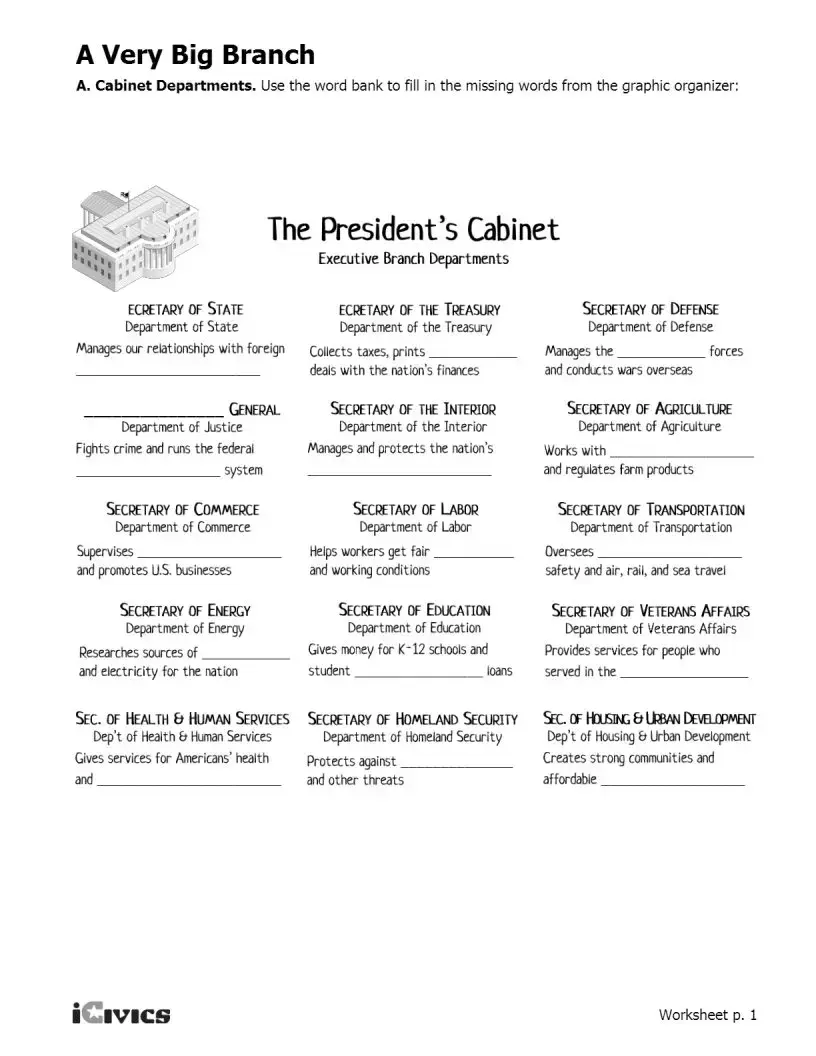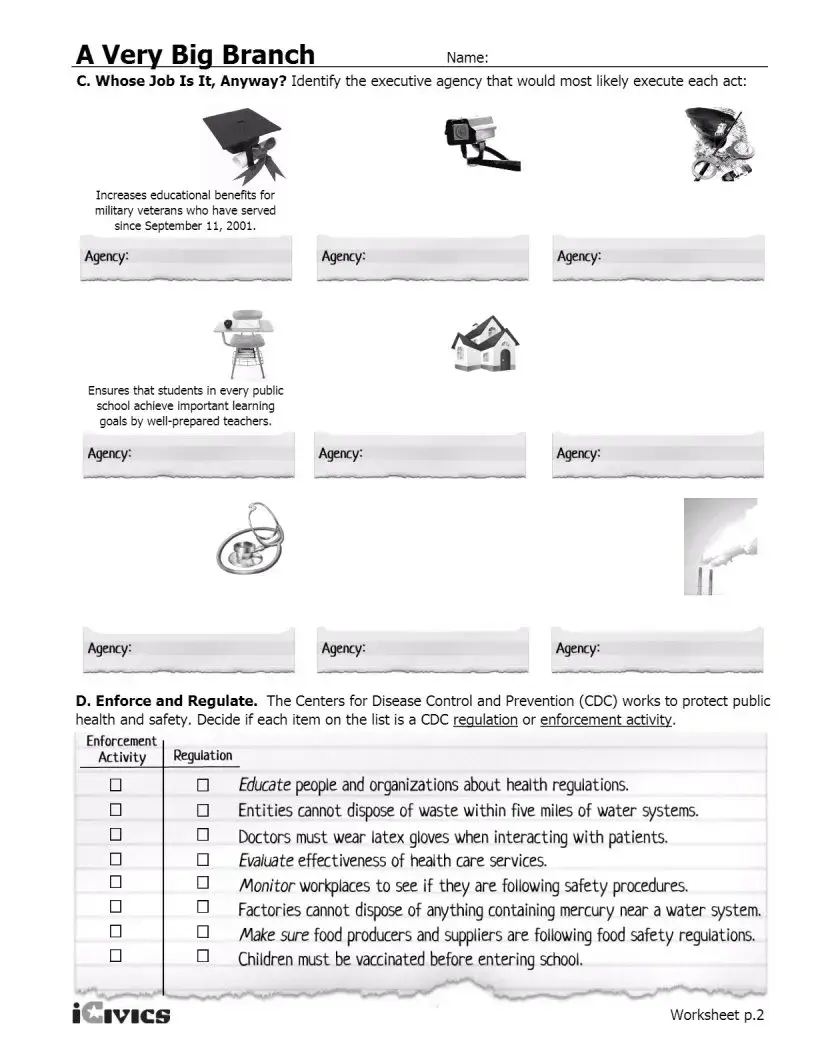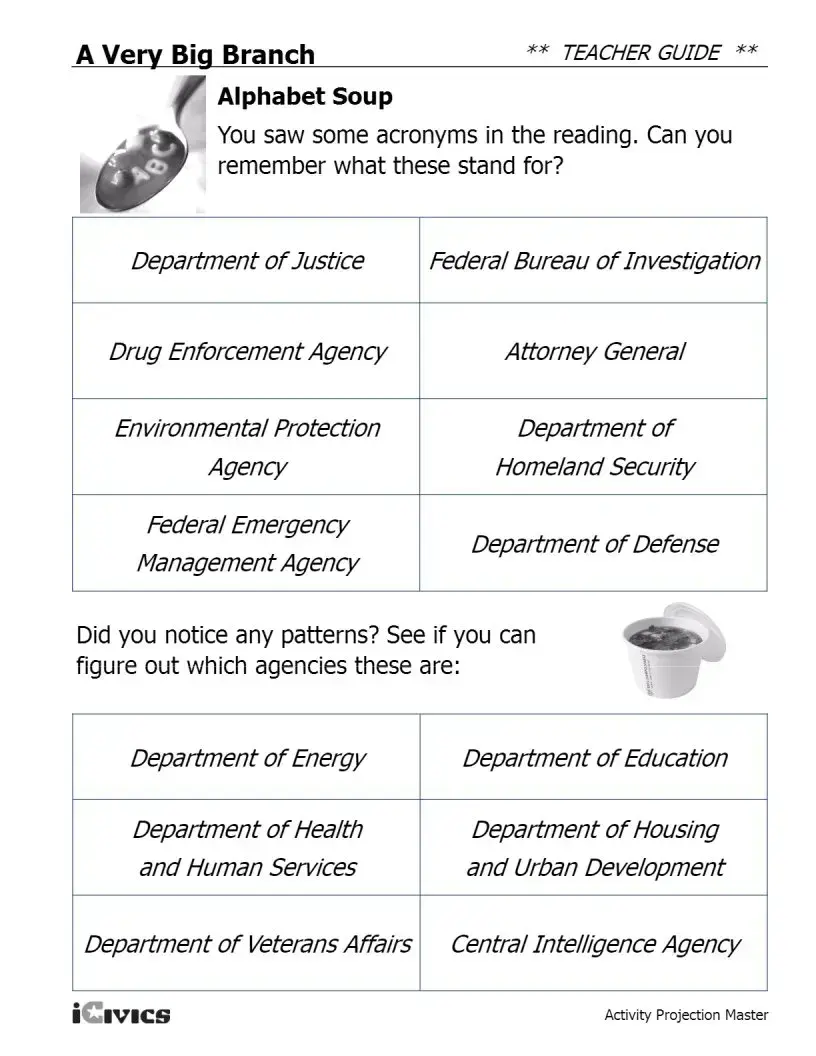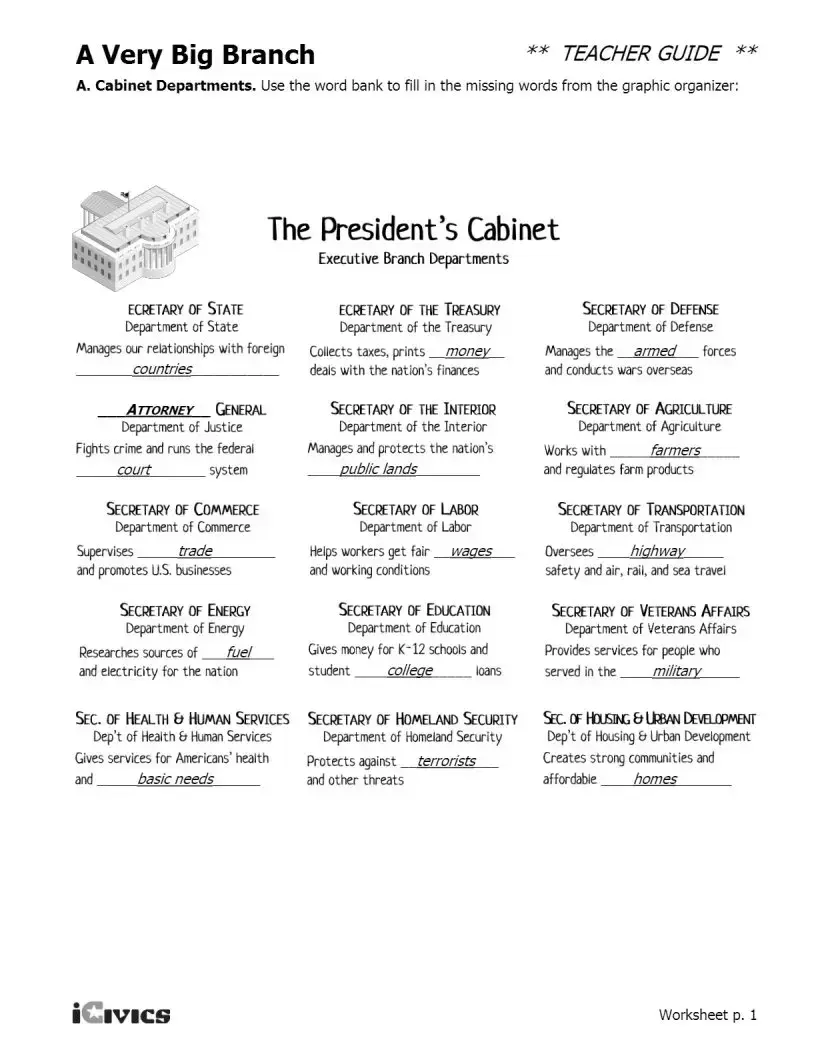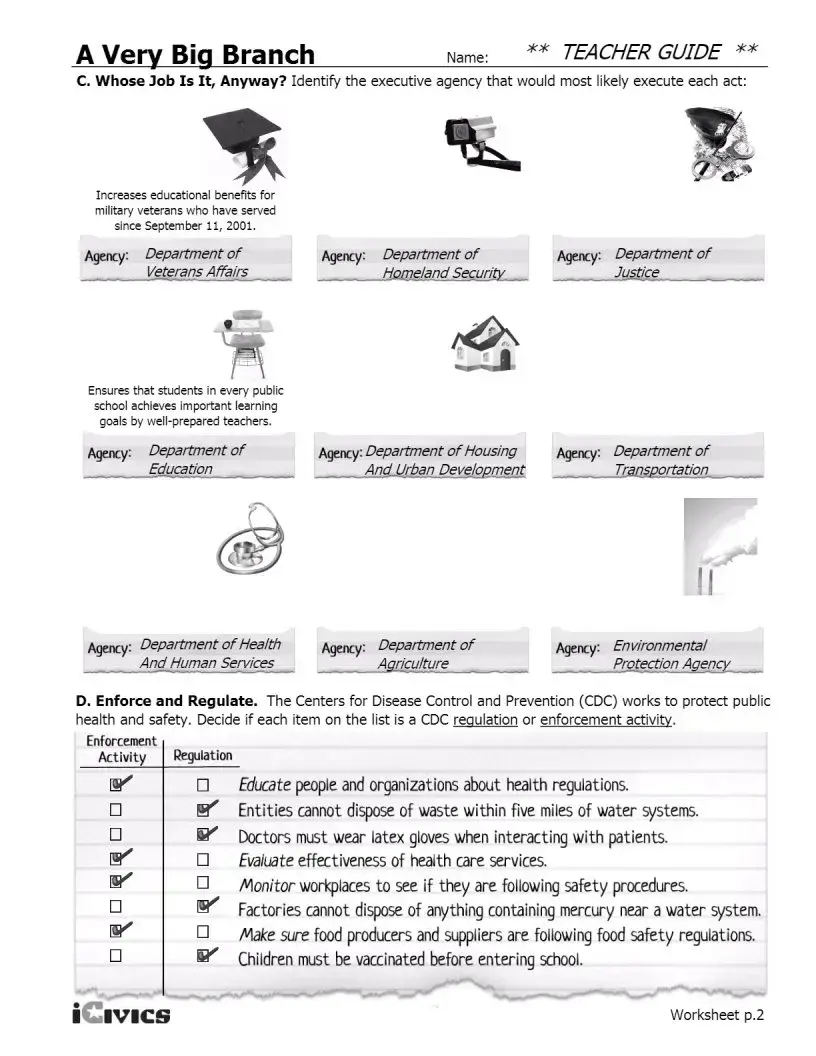The Very Big Branch form encompasses a detailed exploration of the executive branch of the U.S. government, emphasizing its structure, functions, and significance in daily governance. At its core, the executive branch is tasked with implementing and enforcing laws passed by the legislative branch, rooted in a framework that includes the president and various departments and agencies. The president serves as the head of this sizable organization, often likened to the tip of the iceberg, with a vast network of officials and employees working beneath the surface. Central to this branch are the 15 executive departments, each dedicated to a specific area of public policy, such as education, transportation, and defense. Independent agencies and regulatory bodies, while also part of the executive, operate with a degree of autonomy from presidential control, focusing on particular issues and maintaining governance over key societal aspects without direct political interference. The lesson plan associated with the Very Big Branch form employs diverse pedagogical techniques, such as group discussions, interactive activities, and critical thinking exercises, to engage students in understanding the roles of the president, the cabinet, and the numerous agencies that ensure the effective administration of laws. Through this comprehensive framework, learners are encouraged to appreciate the vital functions and extensive reach of the executive branch in American governance.
